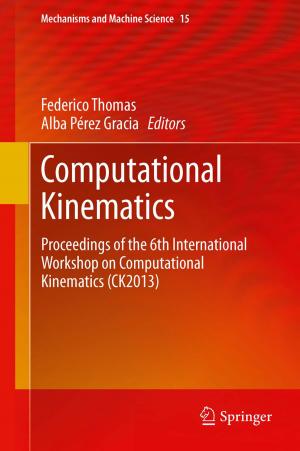Composite Structures
Kids, Natural World, Nonfiction, Reference & Language, Education & Teaching, Science & Nature, Science| Author: | ISBN: | 9789400981201 | |
| Publisher: | Springer Netherlands | Publication: | December 6, 2012 |
| Imprint: | Springer | Language: | English |
| Author: | |
| ISBN: | 9789400981201 |
| Publisher: | Springer Netherlands |
| Publication: | December 6, 2012 |
| Imprint: | Springer |
| Language: | English |
The papers contained herein were presented at the First International Conference on Composite Structures held at Paisley College of Technology, Paisley, Scotland, in September 1981. This conference was organised and sponsored by Paisley College of Technology in association with The Institution of Mechanical Engineers and The National Engineering Laboratory (UK). There can be little doubt that, within engineering circles, the use of composite materials has revolutionised traditional design concepts. The ability to tailor-make a material to suit prevailing environmental conditions whilst maintaining adequate reinforcement to withstand applied loading is unquestionably an attractive proposition. Significant weight savings can also be achieved by virtue of the high strength-to-weight and stiffness-to-weight characteristics of, for example, fibrous forms of composite materials. Such savings are clearly of paramount importance in transportation engineering and in particular aircraft and aerospace applications. Along with this considerable structural potential the engineer must accept an increased complexity of analysis. All too often in the past this has dissuaded the designer from considering composite materials as a viable, or indeed better, alternative to traditional engineering materials. Inherent prejudices within the engineering profession have also contributed, in no small way, to a certain wariness in appreciating the merits of composites. However, the potential benefits of composite materials are inescapable. The last two decades have seen a phenomenal increase in the use of composites in virtually every area of engineering, from the high technology v vi Preface aerospace application to the less demanding structural cladding situation.
The papers contained herein were presented at the First International Conference on Composite Structures held at Paisley College of Technology, Paisley, Scotland, in September 1981. This conference was organised and sponsored by Paisley College of Technology in association with The Institution of Mechanical Engineers and The National Engineering Laboratory (UK). There can be little doubt that, within engineering circles, the use of composite materials has revolutionised traditional design concepts. The ability to tailor-make a material to suit prevailing environmental conditions whilst maintaining adequate reinforcement to withstand applied loading is unquestionably an attractive proposition. Significant weight savings can also be achieved by virtue of the high strength-to-weight and stiffness-to-weight characteristics of, for example, fibrous forms of composite materials. Such savings are clearly of paramount importance in transportation engineering and in particular aircraft and aerospace applications. Along with this considerable structural potential the engineer must accept an increased complexity of analysis. All too often in the past this has dissuaded the designer from considering composite materials as a viable, or indeed better, alternative to traditional engineering materials. Inherent prejudices within the engineering profession have also contributed, in no small way, to a certain wariness in appreciating the merits of composites. However, the potential benefits of composite materials are inescapable. The last two decades have seen a phenomenal increase in the use of composites in virtually every area of engineering, from the high technology v vi Preface aerospace application to the less demanding structural cladding situation.















